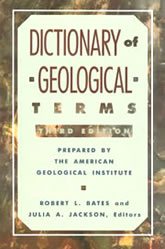Geological Terms Beginning With "Z"
For terms beginning with other letters, please click below
|

Zeolite
A group of hydrous aluminosilicates that are similar to the feldspars. They easily lose and regain their water of hydration, and they fuse and swell when heated. Zeolites are frequently used as catalysts, water softeners, and sorbents. Many zeolites are natural minerals, but synthetic zeolites are widely produced to control properties, control costs, and establish a reliable supply. The image shows the shape of a zeolite crystal. The openings in the crystal increase its surface area for catalyst functions and increase its ability to serve as a sorbent and filter.
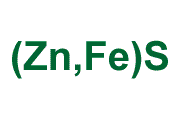
Zinc Blende
An older term used instead of "sphalerite," a zinc sulfide (Zn,Fe)S mineral. It is the primary ore of zinc. Sphalerite is often rich in cadmium - so much that sphalerite mining is the primary source of cadmium. Sphalerite is usually found in rocks altered by hydrothermal and contact metamorphism and is commonly associated with galena and dolomite.
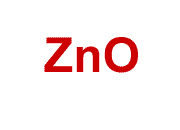

Zircon
Zircon is a zirconium silicate mineral (ZrSiO4) that is found in igneous, metamorphic, and sedimentary rocks. It often contains unstable elements such as hafnium, uranium, and thorium. The presence of uranium and thorium sometimes makes crystals of zircon useful for determining the age of the rocks in which they crystallized, such as granite. Zircon is harder, more resistant to weathering, and has a higher specific gravity than most other minerals. This enables it to be concentrated in placer deposits, where it is sometimes recovered for use as a gemstone. Colorless zircon was once a common substitute for diamond.

Zoisite
A calcium aluminum silicate mineral Ca2Al3(SiO4)(Si2O7)O(OH) that forms during regional and hydrothermal metamorphism. Zoisite is the parent mineral for several gemstones. Tanzanite, a transparent blue zoisite that is often heat-treated to produce the blue color, is the most widely known and popular. Thulite is a pink, opaque zoisite often used for cabochons and small sculptures. Anyolite is a green zoisite with red corundum crystals (rubies), often referred to as "ruby in zoisite."

Zone
A limited area, on or below Earth's surface, where the soil, rocks, or other materials present exhibit a structure, composition, or characteristic that is distinctly different than what is seen in adjacent areas. Examples include: fault zone, flood zone, subduction zone, zone of saturation, zoned crystal, zone of weathering.

Zoned Crystal
A crystal that does not have uniform color or composition. This can be caused by a change in the composition or temperature of the fluid from which the crystal was growing; twinning; or, variations in exposure to heat or radiation. Minerals such as olivine or plagioclase which have a solid solution series are frequently zoned. Shown in the image are two faceted tourmalines cut from zoned crystals produced by growth. The one on the right is known as "watermelon" for obvious reasons. Also, consider ametrine, a bicolor quartz that is a combination of AMEthyst and ciTRINE believed to be caused by twinning.
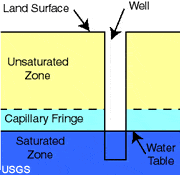
Zone of Aeration
A zone below the land surface but above the water table, where pore spaces are filled mainly with air. Water that exists in the pore space in this zone is referred to as "soil moisture." The "capillary fringe," where capillary action draws moisture from the water table upwards, is considered to be part of the zone of aeration. Also known as the "unsaturated zone."

Zone of Saturation
The zone below the water table, where all pore spaces are completely filled with water. Water that exists within this zone is known as "groundwater." Also known as the "saturated zone."

Zone of Weathering
A subsurface area, above the water table, where mineral and organic materials are subject to weathering. The materials in this area can be subjected to multiple types of weathering. Examples include: a) chemical weathering by exposure to oxygen or acid waters; b) mechanical weathering by exposure to freezing and thawing; c) biological weathering by exposure to roots and burrowing organisms. The photo shows a zone of spheroidal weathering in basalt.
|
Dictionary of Geological Terms - Only $19.99 All scientific disciplines have an essential vocabulary that students and professionals must understand to learn and communicate effectively. A geology dictionary that is used regularly is one of the most important tools for developing professional competence. A good dictionary should be on the desk of every geologist and within easy reach. This dictionary is compact and inexpensive at only $19.99. More information. |
|
| More General Geology |
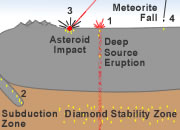 |
Diamonds from Coal? |
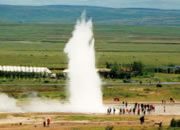 |
What is a Geyser? |
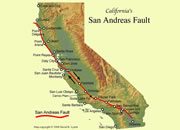 |
What is the San Andreas Fault? |
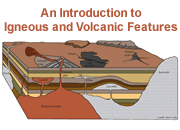 |
Igneous and Volcanic Features |
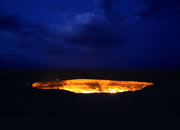 |
The Doorway to Hell |
 |
Topo Maps |
 |
Geology Dictionary |
 |
Gifts That Rock |

Find Other Topics on Geology.com:

|

| ||

|

| ||

|

| ||

|

|

